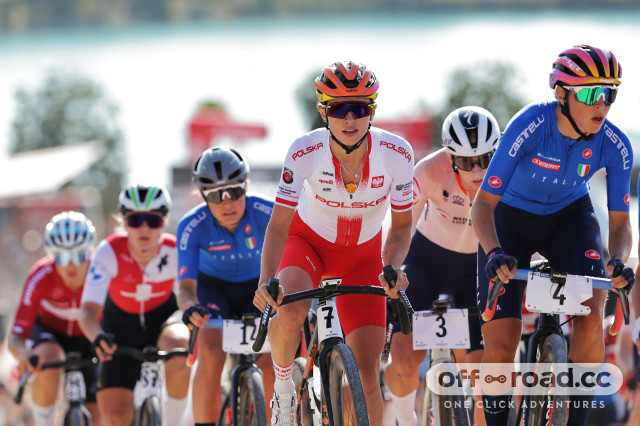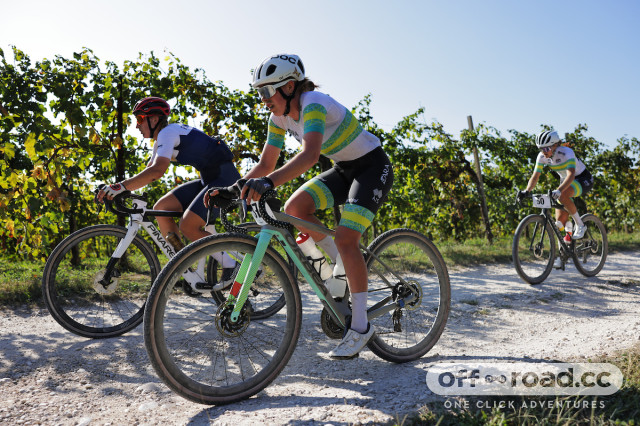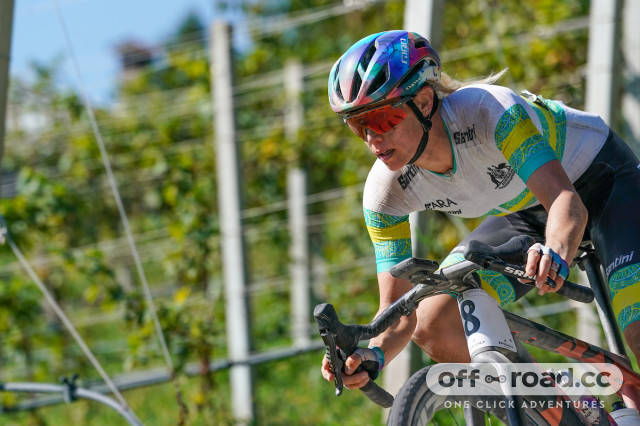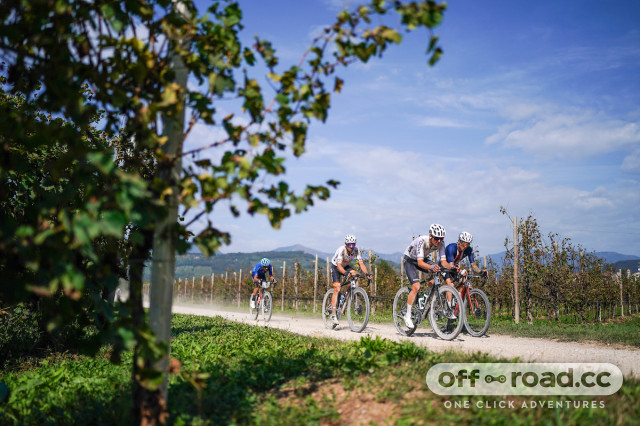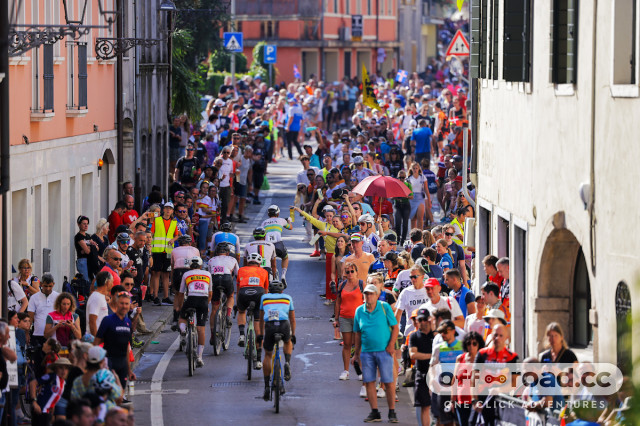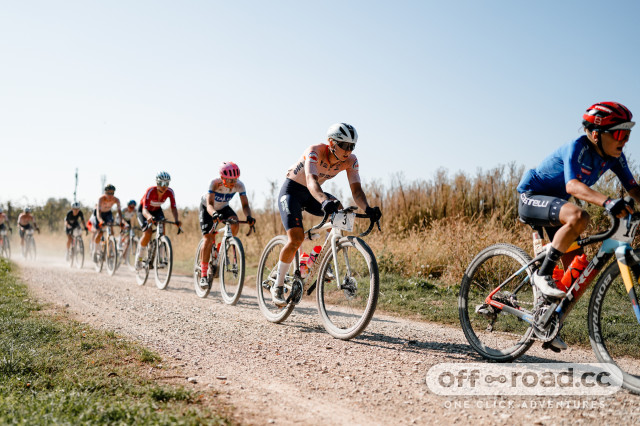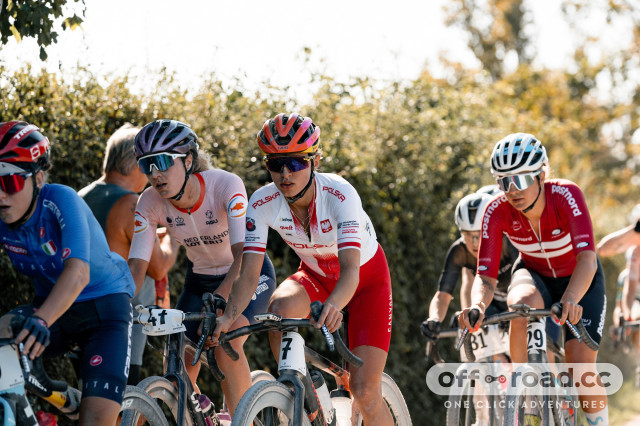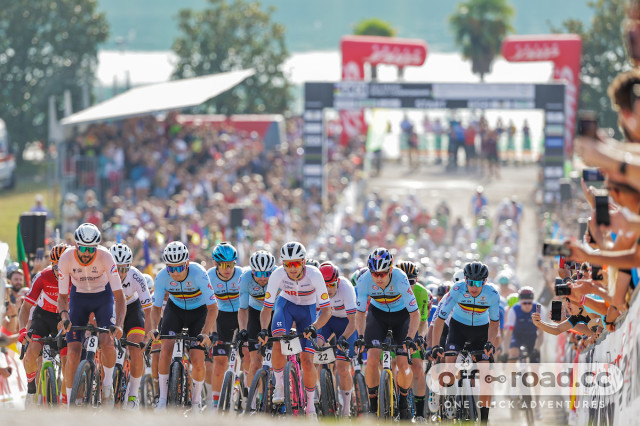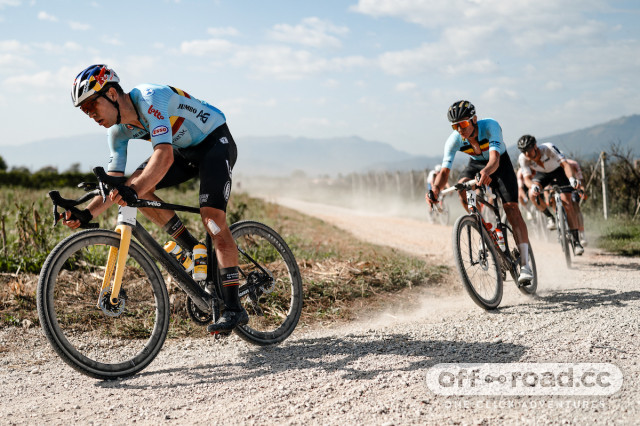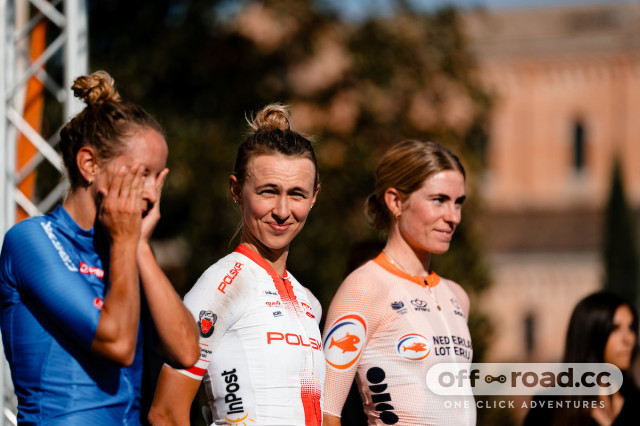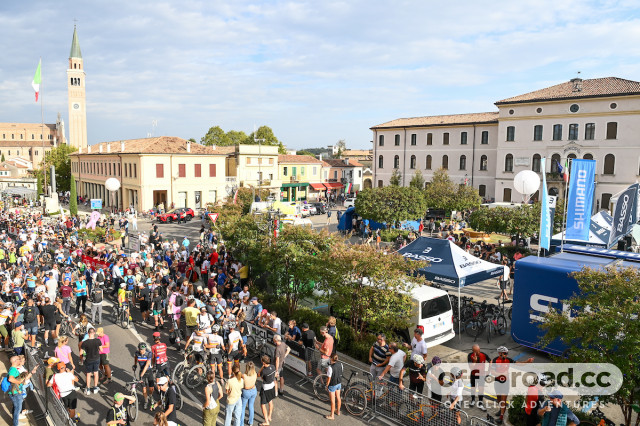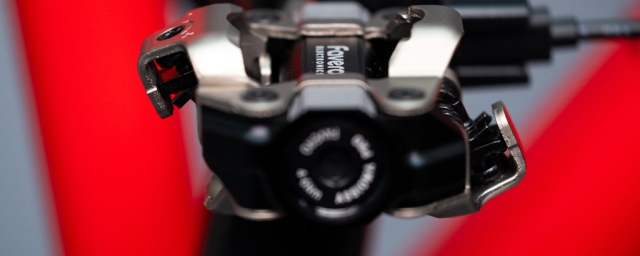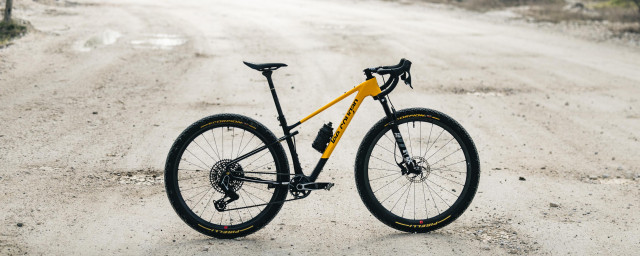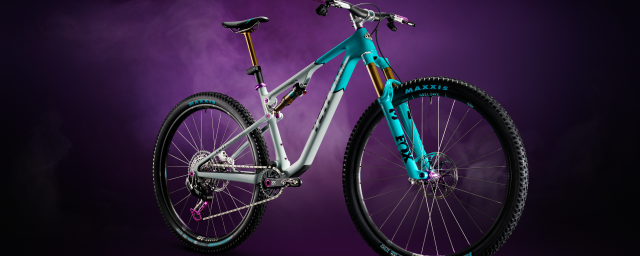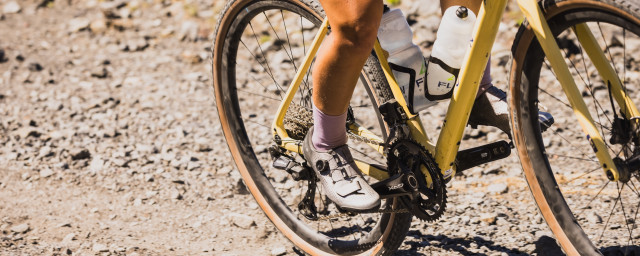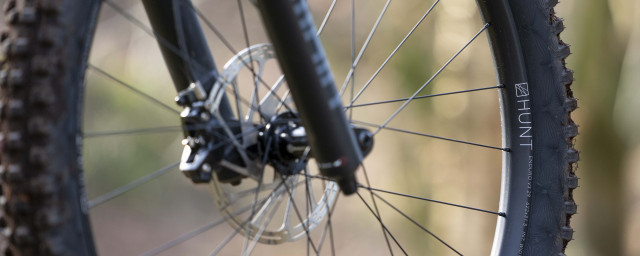UCI Gravel World Championships 2023 - how the race was won
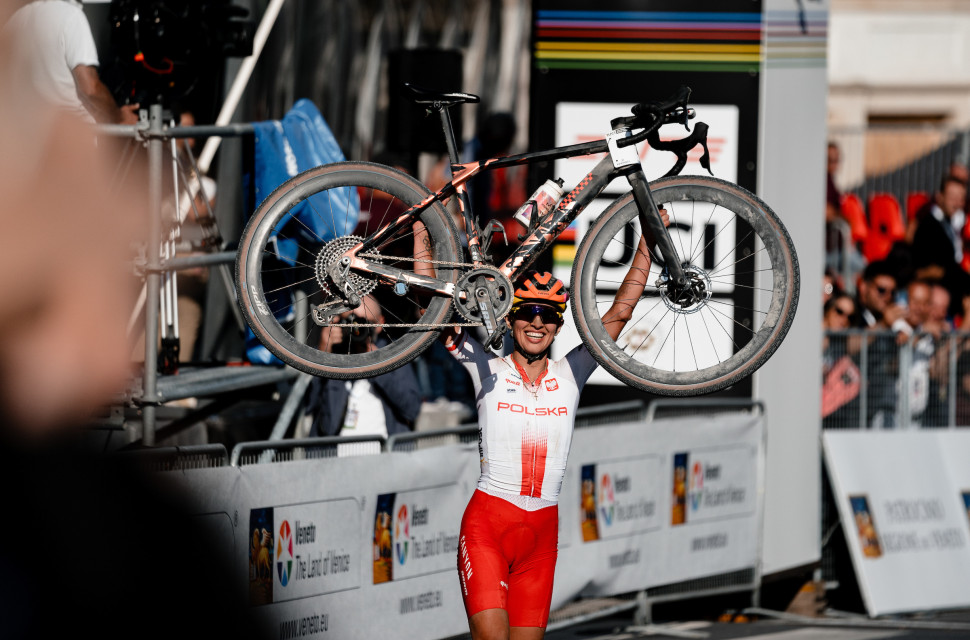
The dust has settled on the 2023 UCI Gravel World Championships, leaving us with a thrilling tale of epic battles, unexpected champions, and the evolving landscape of gravel racing. As the elite women and men took on the challenging course in Veneto, Italy, a story unfolded that showcased both the sport's exciting potential and some of its lingering challenges.
[Words by Steve Thomas]
- Gravel racing - what's next for cycling's fastest growing discipline?
- Gravel race tips: Five tricks for tackling your first long event
- 2023 International Gravel Events - the best off-road events from around the globe
Elite Women's Race - A battle of the unexpected
The Elite Women’s race was a highly expected spectacle that saw the 110 best road and off-road riders of the world lining up on the start line in Veneto on Saturday. The field was predicting the race to be battle, but those wanting to witness it unfolding on their home screens were grimly disappointed as it was announced that there would be no live TV coverage of the Saturday racing. So to get an idea of the race, we had to rely on the info provided by those who were lucky enough to be at the race in person.
On paper, the route and profile looked to be tailor-made for the classic road pros and, although the course perhaps turned out to be a little more “graveliscious” than some had expected, it did indeed turn out to be a grand battle between the road racers.
With defending Champion and odds-on favourite, Pauline Prevot-Ferrand of France absent due to COVID-19 infection the race had a far more open aspect to it - and it is perhaps safe to say not many predicted first-time-gravel racer Kasia Niewiadoma to take the win as she did.
After strongly working in the lead group for the first half of the 141km course, the 29-year-old took her chances as the peloton prepared for final steep climbs.
“On the early climbs, I felt good and could see the others suffering. So when we came closer to the end, I attacked, expecting Demi or someone to join me, and we had a chance to go away together. I didn’t think I would go alone, but I wanted to eliminate some numbers in the group. I knew the final lap from the course recon and that there were some technical parts, so I felt it was a good time for me to go at that moment,” Niewiadoma said after the race.
Italy’s Silvia Persico finished 33 seconds after Niewiadoma and Demi Vollering of the Netherlands took the third. Great Britain's Annabel Fisher finished 9th, and Niewiadoma's CANYON//SRAM Racing teammate Tiffany Cromwell finished tenth, after a strong 2023 gravel season.
The elite women's race podium was dominated by pro road racers, with the gravel and off-road purists finished a little down the list. Sarah Sturm (US) finished 16th, and 2022 Unbound winner Sofia Gomez Villafane was 34th.
Niewiadoma will be racing more gravel in the future (this was her first gravel race) and is expected to compete in the Big Sur Classic in the USA in two week’s time - and we can only hope there is some better coverage of those races so we can witness it all.
The inside line, with Jurgen Beneke – an age grouper’s perspective
Unlike the elite road, track and mountain bike world title races, the gravel championships also have age group categories taking part on the same weekend as the elite, with most of these riders having qualified for the race through UCI Gravel World Series rounds.
Among their number this year, in the 50–54-year-old category, was Jurgen Beneke, a name familiar to fans of 1990s mountain biking. German-born, but now living in and representing the USA, Jurgen was an aspiring road and cyclocross pro, until he discovered downhill mountain bike racing that was, and he duly became the first-ever overall winner of the UCI Downhill World Cup back in 1993. He’s been racing bikes in one form or another ever since, and especially so in the US gravel in recent years.
Given the lack of full live coverage of the racing and his broad racing experience, we asked him what it was like from the inside of the pack.
The course
“This was serious gravel. You would not be happy on less than 40mm tyres. The first 20 miles had some super gnarly gravel, with loose rocks and sand, and it was all gravel. It was very US style, but what was lacking were the (off-road) climbs, they were on rough concrete and pavement, and some road climbs – which was okay. In general, they did a good job – especially in making sure that you’re not going to do this on a road bike, or that you would hate yourself if you did.
"The climbing was so steep, it was close to 8,000 feet (2,400m but it does get it wrong at times) of climbing. I think there’s some confusion about what a gravel race is; I don’t know that there is one model, but this was a great gravel race, as was Nebraska, you deal with what there is where you’re at."
If I imagined an Italian gravel race, then this was it, it did what it was supposed to; find the tiny roads with connecting rough stuff – that’s what gravel is, and it’s different all over. The US is made for gravel, that’s what we have, whereas if it was in Germany the gravel would be too perfect. This was right on the money, no complaints, apart from my legs not working as well as they should,” Beneke said.
The atmosphere
“It was good, a little more serious than the big US events, and I get that – it’s a World Championship, and people wanted to do well, which always surprises me - it shouldn’t, but I’m more of an “OK, I’m here, I made it” kind of person now, given that I used to race 5-minutes downhill and now race five-hours uphill, but it was great overall.
People seemed scared of the downhills; there is a lot of road rider crossover and a lack of skills. If you were a mountain biker, you’d be good. Gravel is so young still, and it will all get figured out.”
Going off-piste and timing niggles
“There was a group of 10 in front of us who got misguided by a motorbike and got lost. I think many people got lost, because of the loops and different number plates and colours, and the different age groups had to make different turns at marker points, and it was a lot to ask of the lead motorbikes to keep track of which groups were behind them.
It was very spectator-friendly, which was genius. We went through the finish three times, and it makes for an amazing elite race to watch – and that’s how I think they designed it, but it makes it difficult to have 1,400 or so races over two days.
In most big events you have live timing, and so you know immediately how you’ve done, or you get an email later telling you. Now, the day after and I still don’t know how I did. The results page shows just 40 riders (for now), and I know there were around 100. I can sense that we’re not a priority -the masters.”
No pictures, please
“They (officials) made me take my GoPro off the bike, and nobody was allowed to do any coverage. It’s not a safety concern as it was under the bars, and I just turn it on and ride. It comes down to TV rights and money, this behaviour, it’s been like this for years.
I understand why no big promotor in the USA wants to put up with it (the UCI infrastructure), and that’s why they’re not getting a Gravel World Championship in the next few years. If you want to grow a race and a scene, well – gravel started in the US (so it should have a title race), and they have the Lifetime Grand Prix series and other huge events, and so it’s – “we’re good (from the promotors).”
Races like Unbound, they’re not the greatest courses, but they are self-promotional machines because riders are sometimes better storytellers (than race-side media) and inspiring to get people to come and do it.
The women here for example (with no live coverage etc.), they were unable to promote themselves or the race, because they were not allowed to put a GoPro on their bikes; that’s just horse s##t. They can’t own your own experience and vision, and that’s why some events in the middle of nowhere blow up, because they have the mass coverage.
Those first 20 miles were fantastic, I had a great time, the rocks were flying everywhere, and if you were in 20th position it was like Thunderdome, and I wish people could see it – and nobody will. Maybe they will have cameras on the pro-elite guys because they can control the footage.”
Men’s Elite Race
What a battle, and what a contrast to the 2022 Elite Men’s Gravel World Championship. Slovenian WorldTour road racer Matej Mohoric is well known as a powerhouse of the pro road peloton. It is ironically best known for his cunning use of a dropper seat post to escape to victory on the final descent of the classic Milan-San Remo road race. He is now the Elite men’s World Gravel Champion for 2023, despite a crash on a descent in the closing minutes of the race.
Perfect weather conditions and a great course made for an epic and true gravel battle largely fought out between leading road pros. While pre-race favourite Wout Van Aert of Belgium crashed out of medal contention early on, his countryman and former cyclo-cross racer Florian Vermeesch (a Paris-Roubaix podium finisher, and no relation to last year’s winner Gianni) made a real nail-biter of a fight of it with Mohoric, with Britain’s Conor Swift being distanced with 24km to go but hanging on for bronze.
Behind the top three, the retried veteran road Alexandro Valverde of Spain and offroad specialist Keegan Swenson of the USA sprinted it out for fifth, with the old stager getting the better of the young American, and not far behind Wout Van Aert came through for eighth.
Thankfully, GCN provided live coverage of the 1.5 hours of the race, and without a doubt that really saved the day for the UCI and the organization, instilling a great amount of faith in the validity of their management of the title race and the sport in general.
The takeaways - a mix of success and challenges
While prosecco is still flowing freely in the restaurants of Veneto (or rather, when the hangovers are kicking in – by the time you read this) there’s a lot to reflect on when it comes to analysing this year’s Gravel World Championships. I guess it would be fair to say it was an overall success, with a few very unfortunate and avoidable twists along the way.
Compared to the 2022 micro-fiasco, and the resulting dubious expectations of many of us, the organisers did indeed put on a great show, a superbly scenic and challenging course which was great to watch – although that was best done in person as the online coverage was below satisfactory to say the least. There was a top draw field, a worthy title battle, but then, there were the buts…
Considering how fast gravel racing has risen, how big it has become, and how important it is to the bike industry, this race - and especially the women's race - deserved a tad more recognition, or we could even say respect. – at least by the sport’s governing body that is. Despite the uncertainty and the last-minute organisational switch, the races were great – and much of that credit falls to the organisation, which did a great job at such short notice (as far as we know). To their credit, the UCI have at least given venues for the next four title races which is a step in a positive, or reasonable direction.
The last-minute announcement of the women's race live coverage situation was a disaster – on more than just a PR level for the UCI itself. The organisation has said in a press release that coverage will be mandatory from 2024, so we can all just hope that the sport's top governing body has learned a lesson here and is ready to recognise all racing with the respect it deserves.
Things are progressing in the right direction, and lessons seem to be learnt – here’s to a bright and dusty future for the “official” side of gravel racing.
